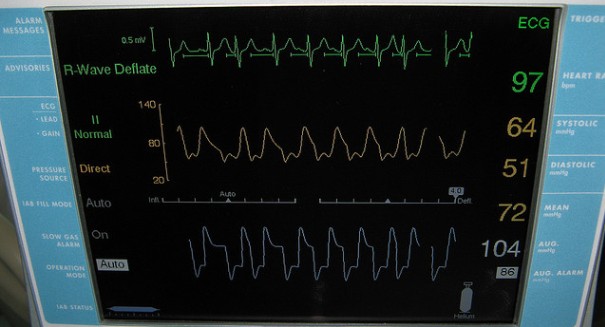
The analysis notes that the lack of impact on mortality should be accepted with caution.
A new study, published in the New England Journal of Medicine, examined the improvement in treatment time for patients presenting at the emergency room with a myocardial infarction. The researchers then analyzed the impact of that change on overall mortality rates. The study concludes that, while national treatment times have improved significantly, the mortality rates essentially remain unchanged.
This study focused on a specific category of heart attacks with ST-segment elevation. The study looked at ST-segment elevation myocardial infarctions that are being treated with primary percutaneous coronary intervention (PCI). The door-to-balloon time should be no more than 90 minutes. Using data from 515 hospitals between July 2005 and June 2009 in the CathPCI registry, the researchers analyzed trends in treatment times and in-hospital mortality.
In an analysis of the study, USA Today points out that the national treatment time went from an average of 83 minutes in 2005 to 67 minutes in 2009. In 2005, 60 percent of patients were treated in the recommended time and, by 2009, 83 percent were treated within the ideal timeframe.
The analysis notes that the lack of impact on mortality should be accepted with caution. First, the study only looked at a type of heart attack that is especially serious. In an ST-elevation myocardial infarction, an artery on the heart is completely blocked and it is a life-threatening emergency. In order to prevent the patient from dying, doctors must restore blood flow and unclog the artery. Also, in this type of heart attack, permanent damage can occur in the first 30 minutes and a delay in presenting to the hospital can result in death even if the hospital treats within 90 minutes.
This study is contrary to earlier findings reported by ABC News. Research published in 2012 found that reducing the time it takes to deliver heart attack care can create a significant reduction in mortality rates. The 2012 study focused on a smaller pool of hospitals only in North Carolina, but did not restrict the types of heart attacks considered. Coordination of care helped reduce the time and the successful program is said to be expanding to 20 other regions.
“Door-to-balloon” time refers to the amount of time it takes from the moment a person presents at the emergency room to receive an angioplasty, reports the Wall Street Journal. This term comes from the fact that the procedure uses a catheter with a small balloon that is inflated to unclog an artery.
Leave a Reply